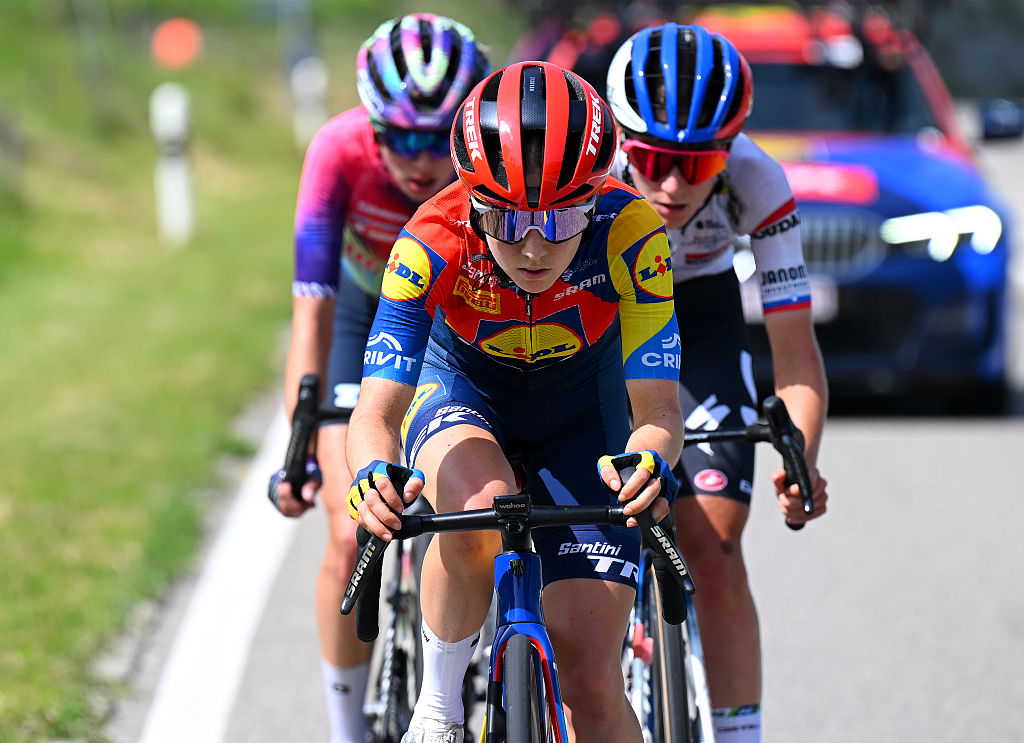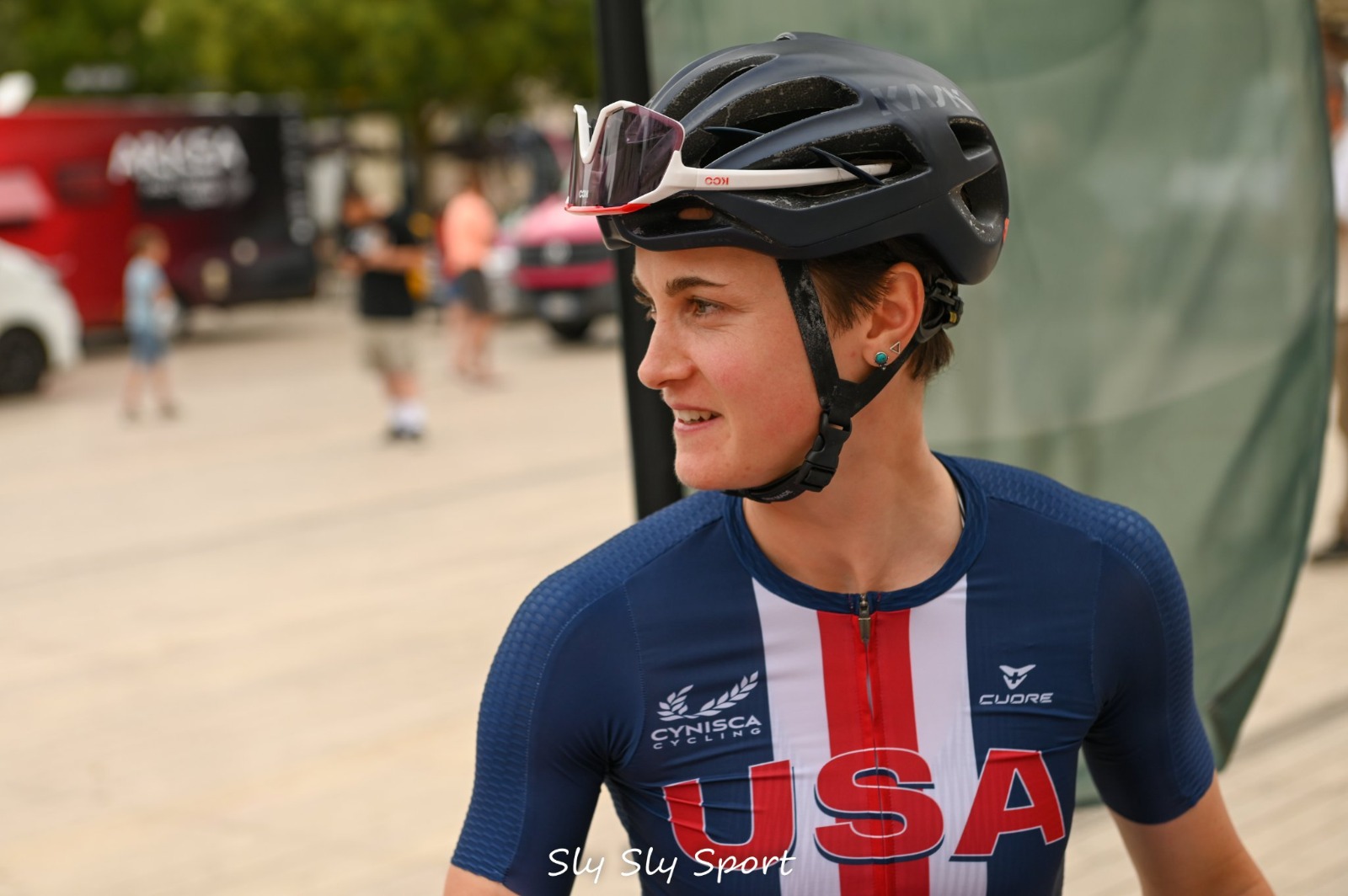UCI doubles down on handlebar width limits and maximum gearing test despite ongoing criticism
Women's rider union says handlebar regulation 'puts riders at risk' but UCI says new rules were 'developed following extensive consultation with riders, teams and organisers'

In the face of ongoing criticism, the UCI has doubled down on various rulings made in the last week surrounding equipment in the pro peloton, including the introduction of a maximum handlebar width for road and cyclo-cross pros, and a trial of maximum gearing rules.
Under rules announced on June 12, from next year handlebars must be at least 400mm wide at the outer edge, and 320mm between the inner edges of the brake levers. An additional memo on June 17 confirmed that the UCI will trial limitations of gear ratios later this year, in a bid to reduce maximum speeds in the peloton.
Both new introductions have attracted widespread criticism from riders and onlookers, with the handlebar issue causing particular concern in the women's peloton, as female riders are on average smaller and use narrower handlebars.
Even a week on, the criticism has not abated, with independent women's rider union The Cyclists' Alliance putting out a statement on Friday opposing the rule, adding to a similar message put out by the International Bike Fitting Institute (IBFI) earlier this week.
"We urge the UCI to reconsider this decision and withdraw this proposal and instead prioritize evidence-based measures that protect and enhance all riders' well-being and race safety," a TCA statement read.
"Female cyclists face the greatest impact from this arbitrary restriction on minimum handlebar width because they are statistically smaller in stature, with narrower shoulder widths."
The Cyclists' Alliance, the popular union choice for many female riders, is not affiliated with the UCI in the way that the Cyclistes Professionnels Associés (CPA) riders' association is, so is not involved in things like SafeR project.
The latest race content, interviews, features, reviews and expert buying guides, direct to your inbox!
On the issue of gearing limitations, concerns have been raised over the impact for SRAM-sponsored teams and their 10t cogs, and whether this is an effective and manageable way to try to limit speeds.
However, the UCI is showing no signs of changing their stance, releasing on Friday a rare statement to "provide further clarification on the recent amendments" which largely reiterated what they have said, without responding to specific criticisms, and explained how the decisions were taken.
"These changes are part of an overall approach aimed at ensuring ever safer and fairer competition conditions, in a context marked by rapid technological advances and a significant increase in racing speeds that could have an impact on rider safety," the press release read.
"Several of these measures respond to recommendations made by SafeR, the organisation dedicated to improving safety in men's and women's professional road cycling. They were developed following extensive consultation with riders, teams and organisers, including through the distribution of questionnaires to the entire peloton."
On the topic of handlebar width, the release provided a more detailed explanation of the rule with diagrams to show the rules.
The UCI statement did not mention female cyclists specifically, but did say: "These changes, defined in consultation with stakeholders, aim to ensure that all athletes, regardless of their body type, can compete with equipment that is both high-performance and safe."
The statement also reconfirmed that the UCI intends to trial limitations to gear ratios later this year, with the test event yet to be announced, clarifying that the intention is to limit speeds in the peloton.
"A test to limit the maximum gear ratio – approved by all families – will be carried out during a stage race in the second half of the 2025 season. The maximum gear ratio allowed in this context will be 54 x 11, i.e. 10.46 metres per crank revolution. The maximum gear ratio limitation aims to limit the speed reached in competition. It has been proven that the very high speeds reached by riders today are a risk factor for their safety."
The statement also reiterated and provided diagrams regarding maximum fork width and maximum rim height rules, as well as explaining that specific regulations around helmets – where a distinction is set to be made between what is allowed in time trials and what is allowed in road races – will be published at a later date.
Despite holding firm on the latest amendments, the governing body did conclude by noting that all rules are continuously reviewed.
"The UCI regularly reviews and revises its regulations to take account of technical advances, while placing safety and fairness at the heart of the rules in all cycling disciplines."
Matilda is an NCTJ-qualified journalist based in the UK who joined Cyclingnews in March 2025. Prior to that, she worked as the Racing News Editor at GCN, and extensively as a freelancer contributing to Cyclingnews, Cycling Weekly, Velo, Rouleur, Escape Collective, Red Bull and more. She has reported from many of the biggest events on the calendar, including the Giro d'Italia, Tour de France Femmes, Tour of Flanders and Paris-Roubaix. She has particular experience and expertise in women's cycling, and women's sport in general. She is a graduate of modern languages and sports journalism.
You must confirm your public display name before commenting
Please logout and then login again, you will then be prompted to enter your display name.
